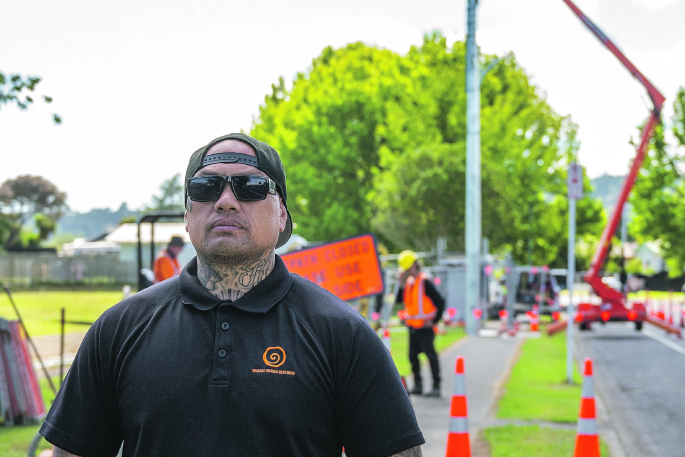Many residents in the Whakatāne neighbourhood of Awatapu were surprised last week to see a new cell tower had appeared on council reserve land, practically overnight.
Marley Taipeti said he saw the Connexa truck arrive on Wednesday afternoon to install the tower on Awatapu Drive beside the reserve and pump station, and went over to ask the workers what was happening.
A Spark spokesperson said it had built the 13 metre cell tower to improve connectivity for the surrounding community.
“With demand for data doubling in Whakatāne in the last three years, it is critical that we upgrade and build new cell towers to ensure we can meet that demand.”
Mr Taipeti said he was disappointed he hadn’t been informed a cell tower was being built in his neighbourhood.
“The council, or whoever is supposed to approve these things, didn’t let anybody know about it.”
“I own a house there. For me, at least they could have educated us on these towers – even a pamphlet.
“I don’t know much about these towers but I know they have radiation. I don’t know if it’s going to be safe for my children. I don't want my kids, over time, or my grandkids getting sick.”
New Zealand mobile networks adhere to safety standards set by Te Whatu Ora (Health New Zealand), which include substantial safety margins for radiofrequency power, 50 times lower than the point there could be any impact on human health," the Spark spokesperson said.
“Our towers are typically only a small fraction of the permitted exposure level.”
Whakatāne resource consents manager Mike Avery said the Spark mobile phone antenna had been granted resource consent on July 9.
It was a permitted activity under the Whakatāne District Plan but required consent as a controlled activity under the National Environmental Standards for Telecommunications Facilities (NES-TF). The antenna was being erected on an existing light pole on a road reserve.
“The NES-TF is generally enabling of telco works,” Mr Avery said. “Especially when these are co-located with other services, such as on a light pole. As a controlled activity under the NES-TF, the consent had to be granted and is not subject to any form of notification.”
The Spark spokesperson said it went through a rigorous process to select a location for cell towers that provided the best connectivity for the most amount of people while also ensuring it avoids interference with other cell towers, trees and buildings, considers the visual impact within the landscape, and ensuring it adheres to environmental standards.
“Cell towers are now considered critical infrastructure, providing crucial connectivity that plays a vital role in keeping communities safe, while also ensuring equitable opportunities for communities to flourish in a digital world.”
The spokesperson said despite not being required to, where there are residences immediately adjacent to proposed infrastructure, they do let them know by letter, providing a contact for questions and concerns.
LDR is local body journalism co-funded by RNZ and NZ On Air.




5 comments
cell tower
Posted on 11-12-2024 18:02 | By peter pan
Suppose they could take it away and not worry about cellphone coverage .
Cell phones
Posted on 11-12-2024 18:55 | By Colleen S. Johnson
If people didn't use cellphones, there wouldn't be a need for cellphone towers.
Hmmm
Posted on 11-12-2024 19:03 | By Let's get real
I WANT IT.... BUT NOT IN MY NEIGHBOURHOOD.
How is this news?
Posted on 12-12-2024 08:42 | By Astoreth
“I don’t know much about these towers but I know they have radiation. I don’t know if it’s going to be safe for my children. I don't want my kids, over time, or my grandkids getting sick.”
Somebody has got a monster under their bed!
Think about it
Posted on 12-12-2024 08:51 | By BIC_BOI
“I don’t know much about these towers but I know they have radiation. I don’t know if it’s going to be safe for my children. I don't want my kids, over time, or my grandkids getting sick.”
If this were the case everyone in the world would be dead from radiation by now. More likely Mr Taipeti just wants to get on the news
Leave a Comment
You must be logged in to make a comment.